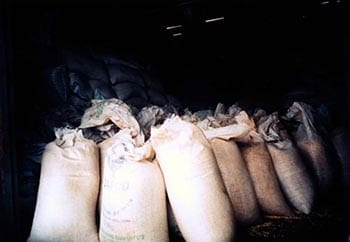Minute whiskers of nanoscale dimensions taken from sea creatures could hold the key to creating working human muscle tissue, University of Manchester researchers have discovered.
Scientists have found that cellulose from tunicates, commonly known as sea squirts, can influence the behaviour of skeletal muscle cells in the laboratory.
These nanostructures are several thousand times smaller than muscle cells and are the smallest physical feature found to cause cell alignment.
Alignment is important since a lot of tissue in the body, including muscle, contains aligned fibres which give it strength and stiffness.
Cellulose is a polysaccharide — a long chain of sugars joined together — usually found in plants and is the main component of paper and certain textiles such as cotton.
It is already being used for a number of different medical applications, including wound dressings, but this is the first time it has been proposed for creating skeletal muscle tissue.
Tunicates grow on rocks and human-made structures in coastal waters around the world.
Cellulose extracted from tunicates is particularly well suited for making muscle tissue due to its unique properties.
University of Manchester academics Dr Stephen Eichhorn and Dr Julie Gough, working with PhD student James Dugan, chemically extract the cellulose in the form of nanowhiskers. One nanometre is one billionth of a metre and these minute whiskers are only 10s of nanometres wide — far thinner than a human hair.
When aligned and parallel to each other, they cause rapid muscle cell alignment and fusion.










